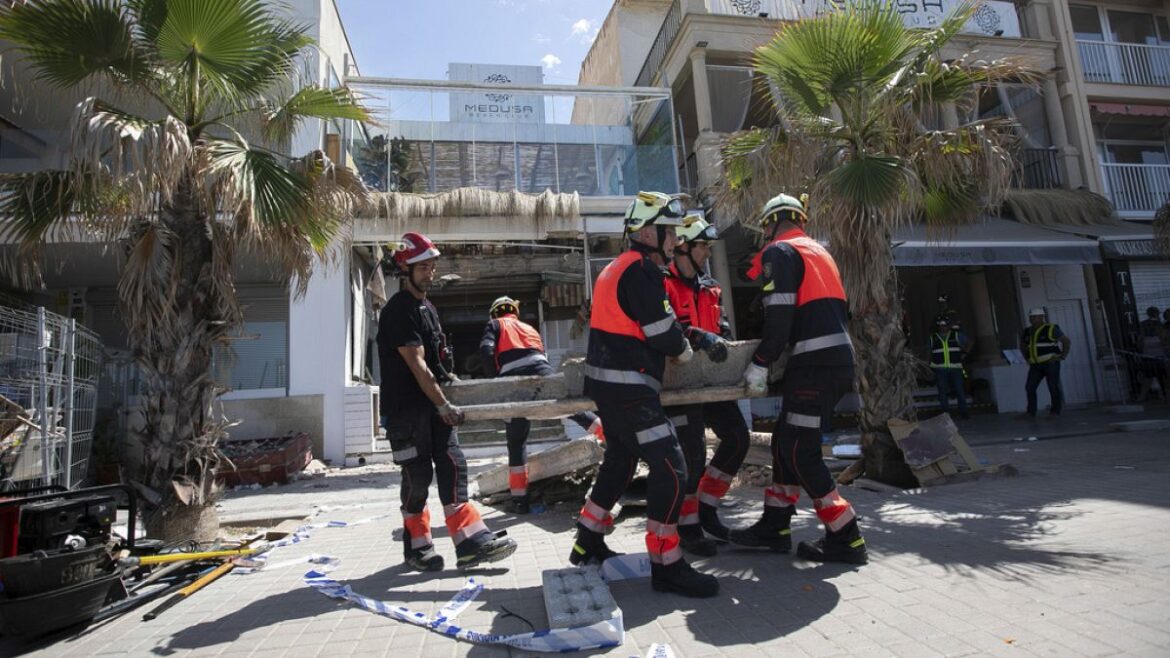The disaster left four dead and many injured. The causes of this event, which shocked the entire island, are still being analyzed. Enric Heredia, president of the Association of Structural Consultants, helps us understand what could have happened.
THE municipal technicians and scientific police continue to collect evidence in the rubble of the former Medusa Beach Club, the venue which collapsed on Thursday evening in Palma de Mallorca, causing least four dead and 16 injured. It appears that a group of people dancing around 8 p.m. was responsible for the restaurant’s fatal collapse.
The investigation is still ongoing, with local media reporting that they are looking into whether the terrace, which caused the collapse, was in good condition and legal. The building had been the subject of an inspection which had identified minor pathologies not compromising the structure, but had reported that the roof (used as a terrace) was not practicable.
The space, approximately 140 square meters, supported a weight for which he was not prepared. Enric Heredia, president of the Association of Structural Consultants, an association which brings together specialists in structural calculations, spoke with Euronews to explain the circumstances of this tragedy.
An old house transformed into a performance hall
Originally, the Medusa was a old house from the 50s and 60s converted into a performance hall, which is quite common in tourist areas. The key to these “second lives” for houses transformed into performance venues is to ensure that they are properly redeveloped to accommodate large crowds. “The change of use is completely natural and happens often, especially in tourist areas”explains Enric Heredia.
Capacity is limited by the Ministry of Labor. As Enric Heredia explains, it is up to the technicians toestimate the chargeswhich are 500 kilos per square meter, to check that the structure supports the weight correctly and that there is no danger.
Is “marés” a recommended material for these buildings?
The club was built in “tides” – regional type of sandstone, used especially in the Balearic Islands.Traditional concrete is a more resistant material and, in principle, more suitable for buildings that need greater load capacity. Mr. Heredia believes that the problem does not lie in the “marés”, which is “perfectly valid for many types of construction”but in type and thickness: “Everything indicates that this type of collapse has nothing to do with the material.”
The building owners had carried out renovation work last winter and it is precisely these works which could be linked to the collapse of the structure, and this will therefore be an element to study. “THE building modification work is always delicate, they require special attention, a concrete plan of what is going to be done, good monitoring of the work and good monitoring of their implementation,” declared Mr. Heredia.
According to the Palma fire chief, the main cause of the collapse was a structural overload.
Mr Heredia specifies that all engineering and construction involves a certain degree of uncertainty, but that the entire Spanish building stock is subject totechnical inspections every ten years in order to guarantee the health of buildings. “It is a system which, although it has made it possible to introduce this culture of maintenance, turns out to be insufficient in some case”.
This is why the Association of Structural Consultants supports the figure of chief technicianthat is to say a person building manager in each community or property: “A specialist who knows the building, who must take responsibility for the maintenance of the building, its modifications and all the interventions that occur. We believe that with this figure we can begin to take a little more seriously the “maintenance and conservation of our real estate stock”.
Additional sources • adaptation: Serge Duchêne



